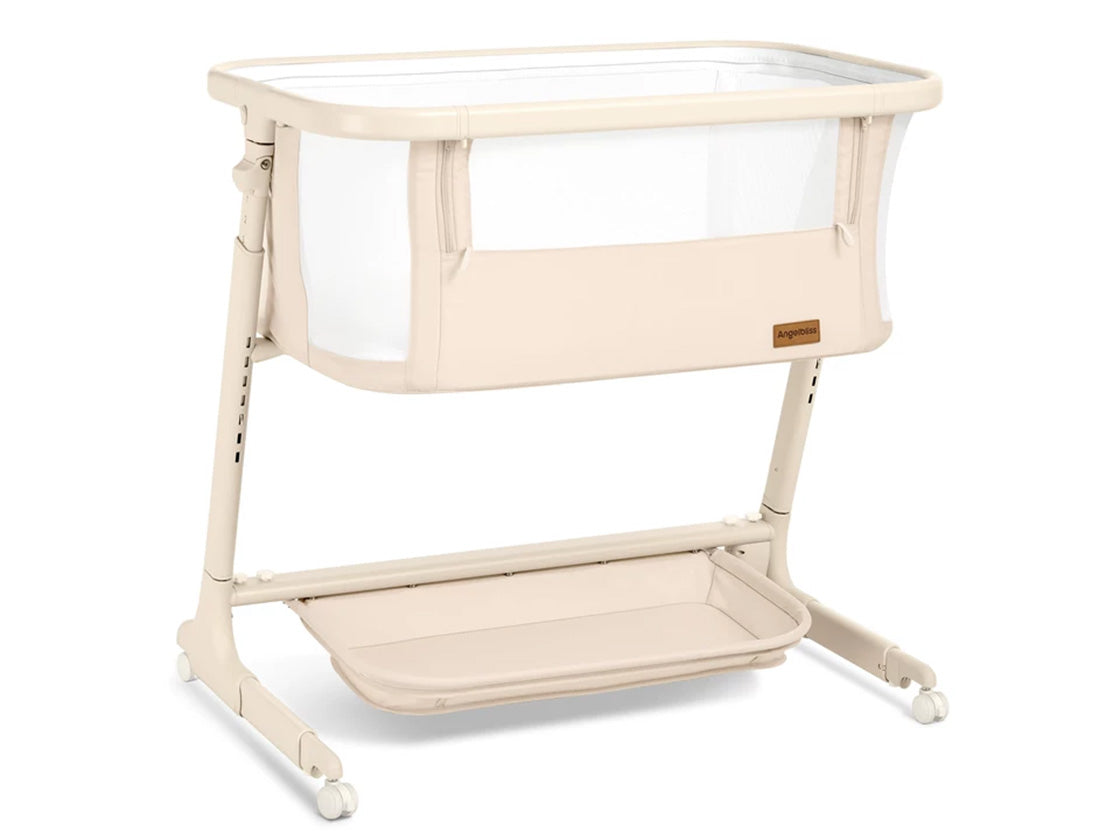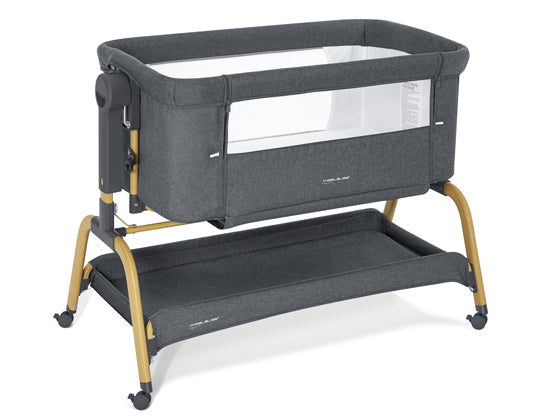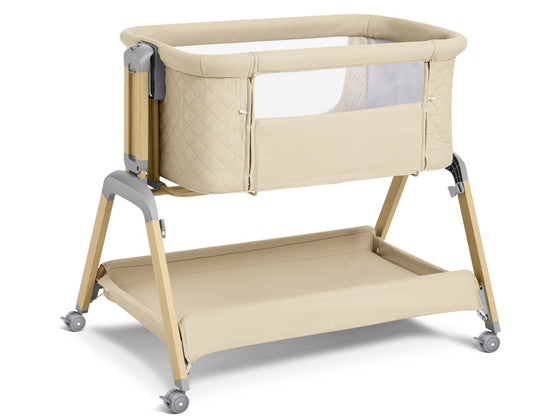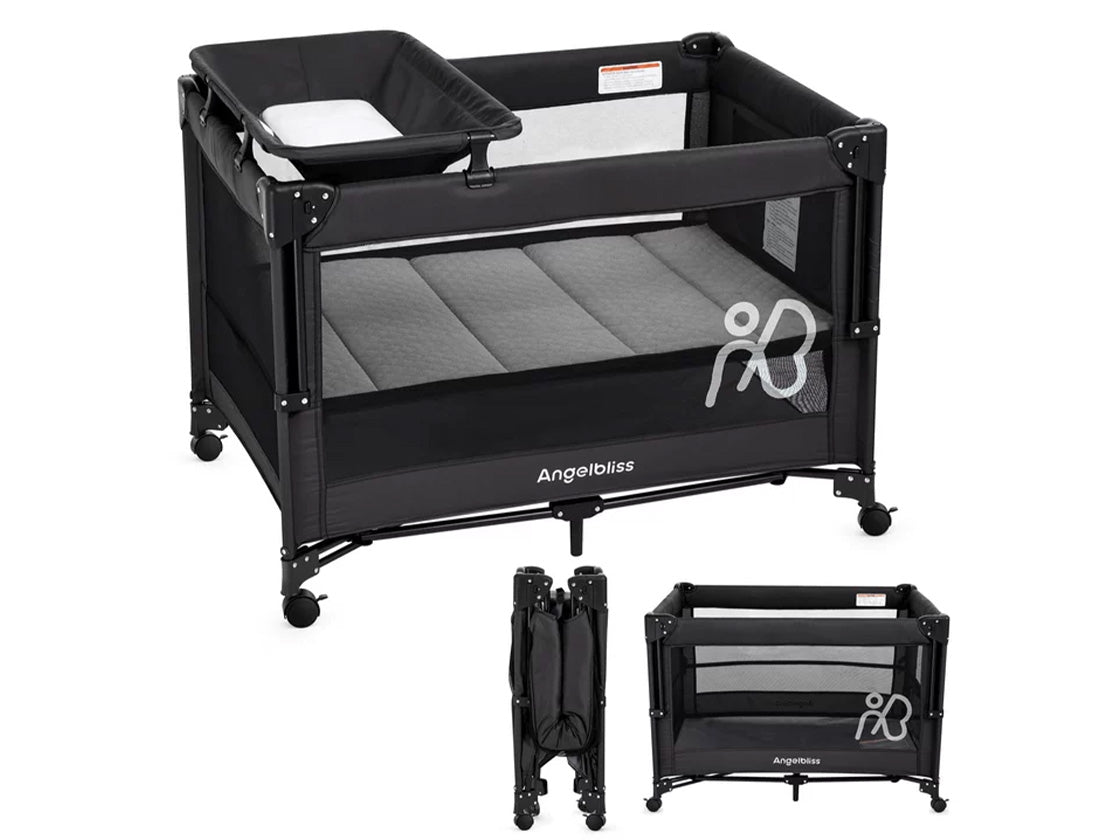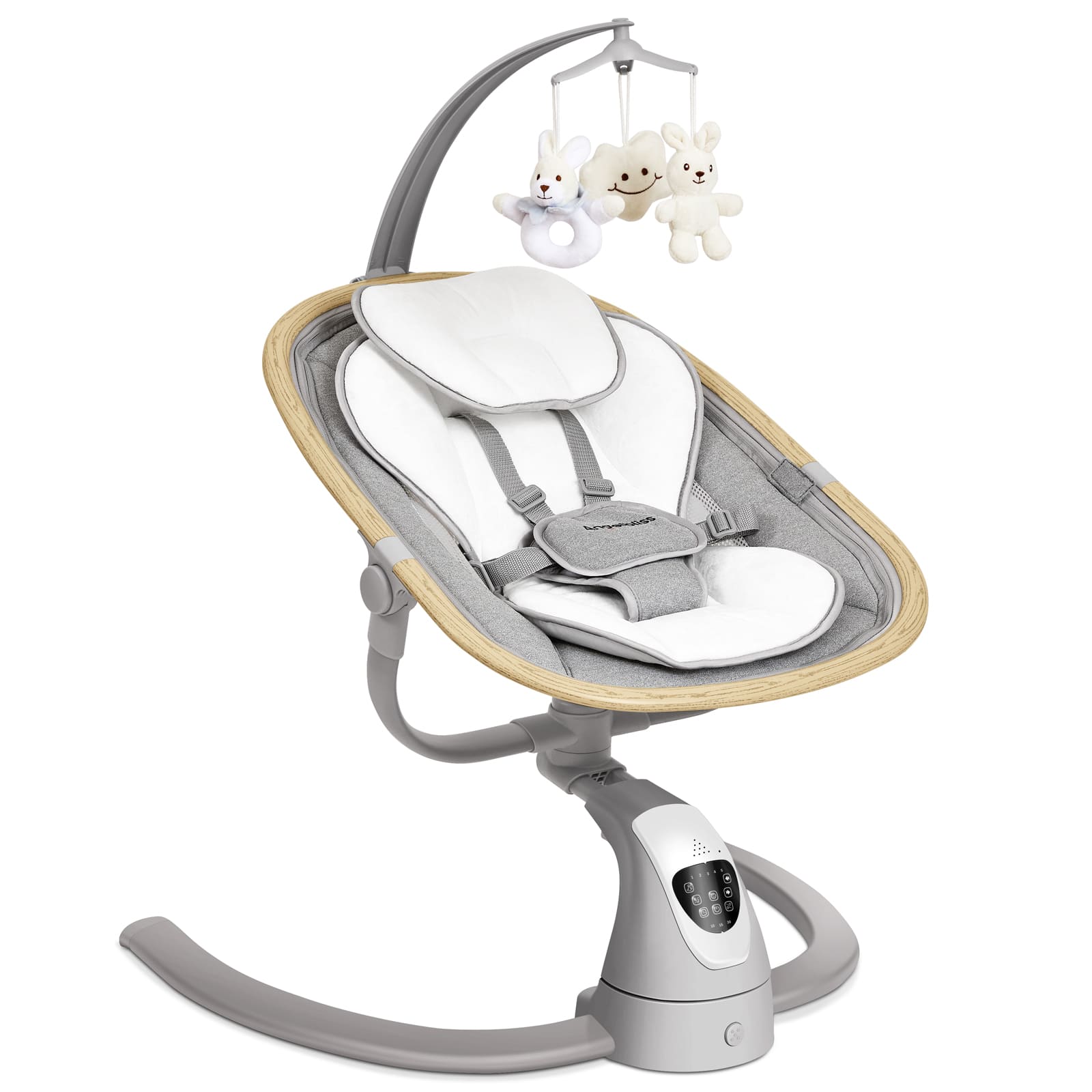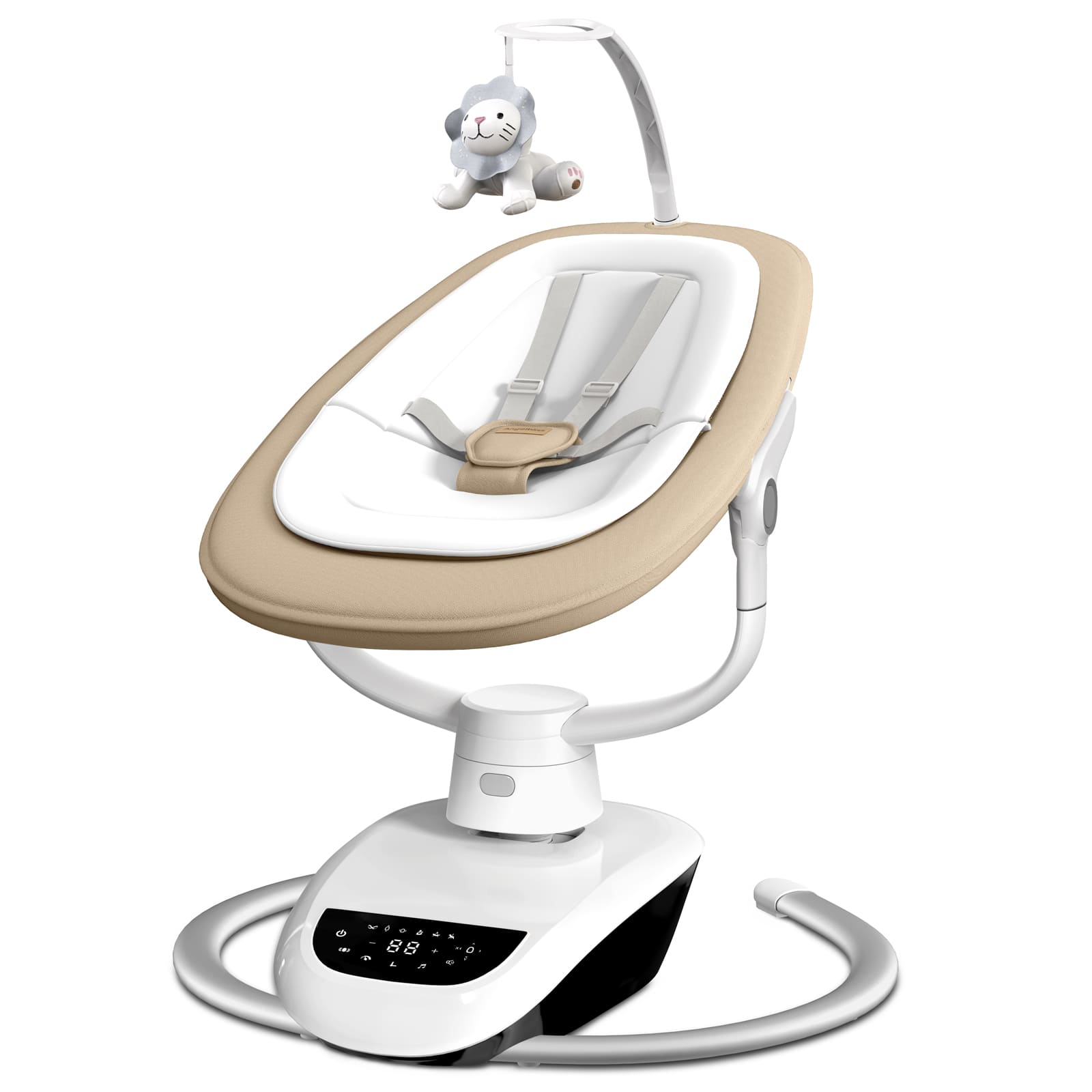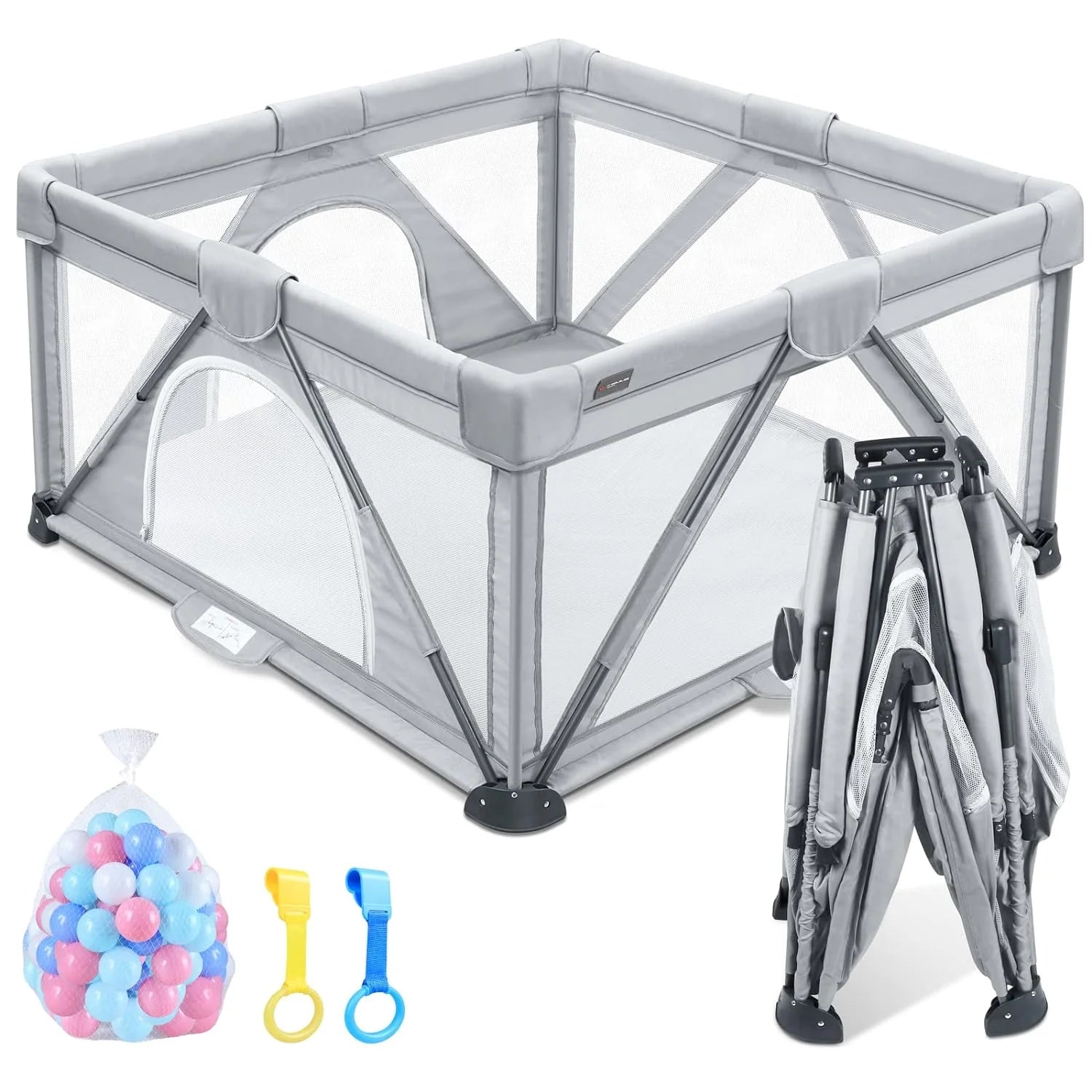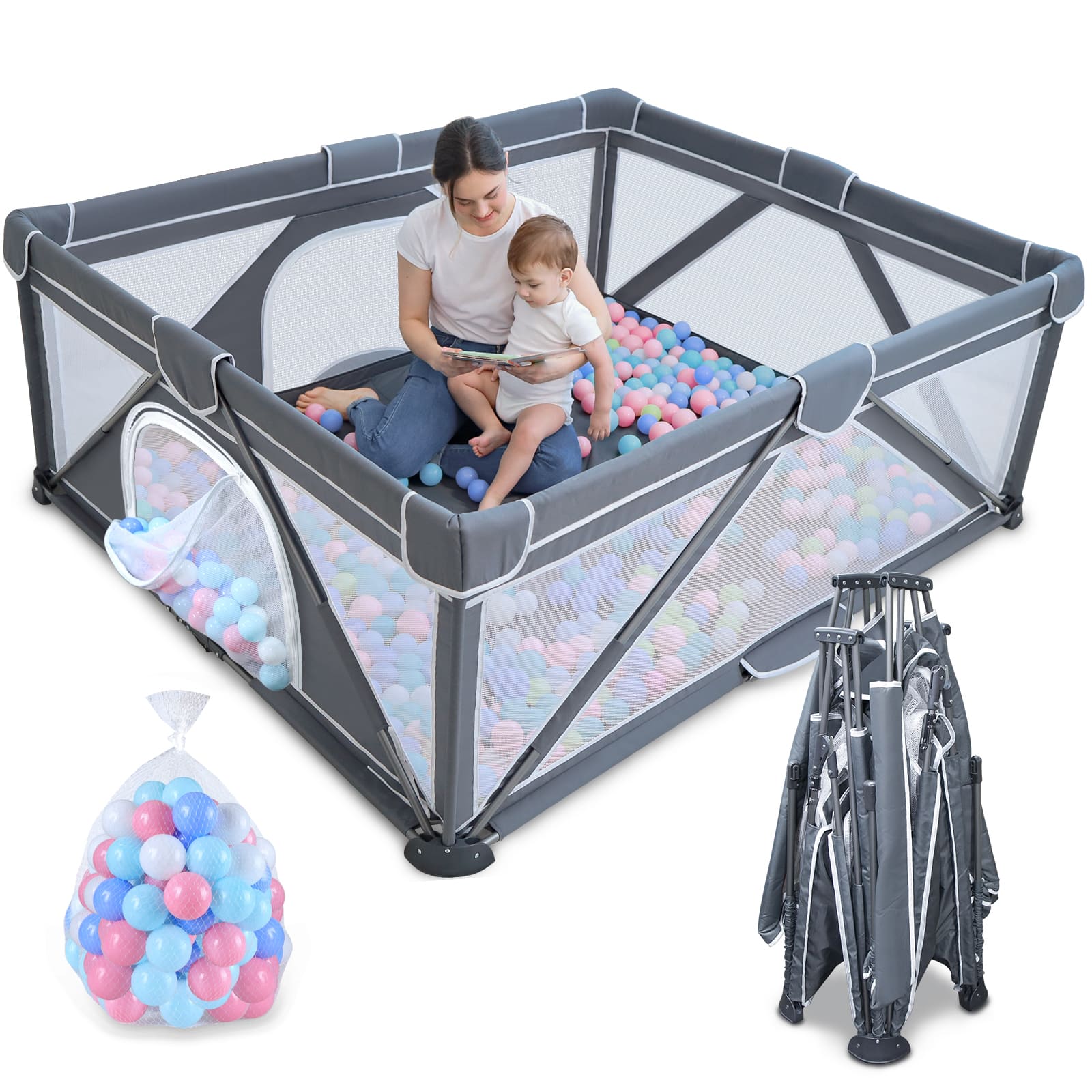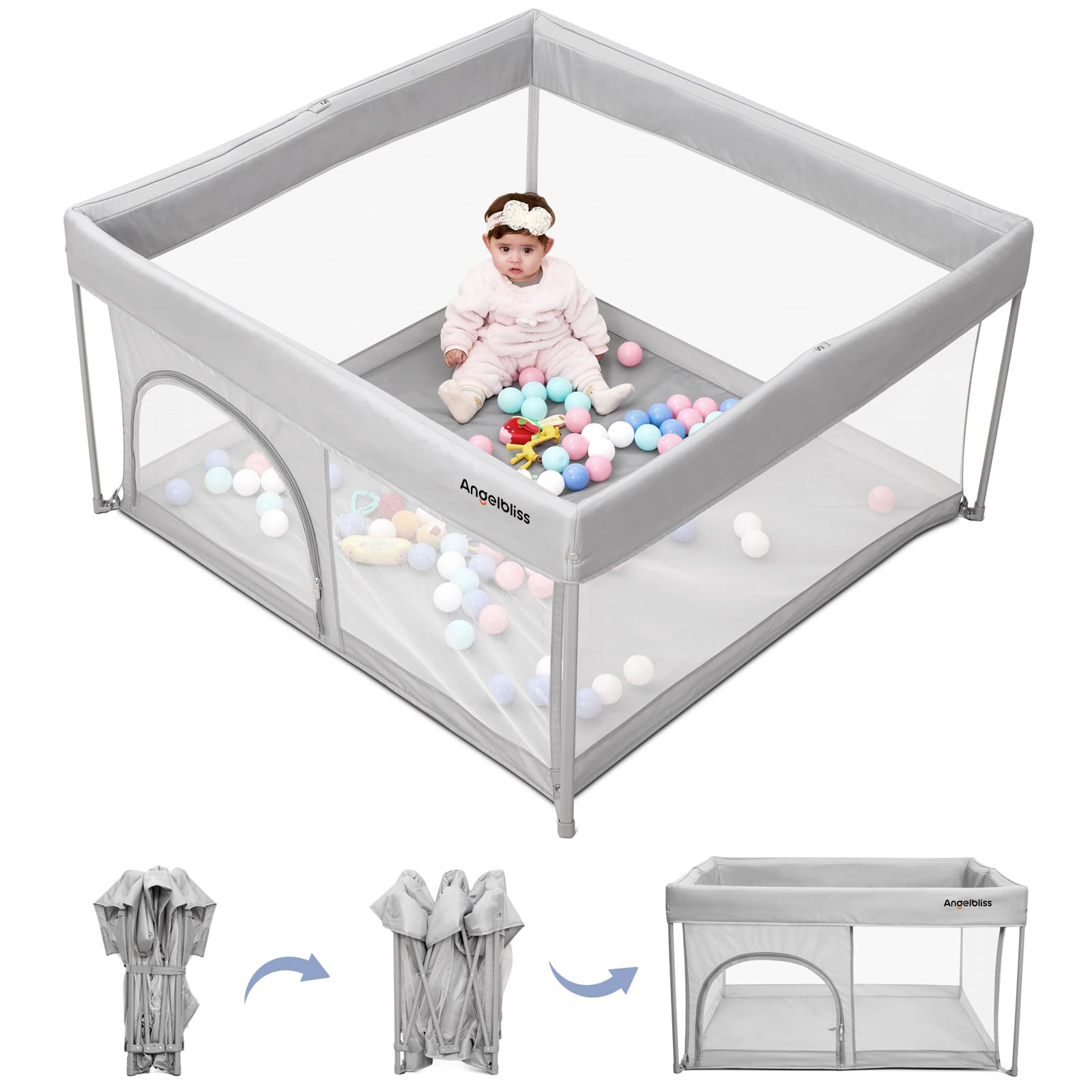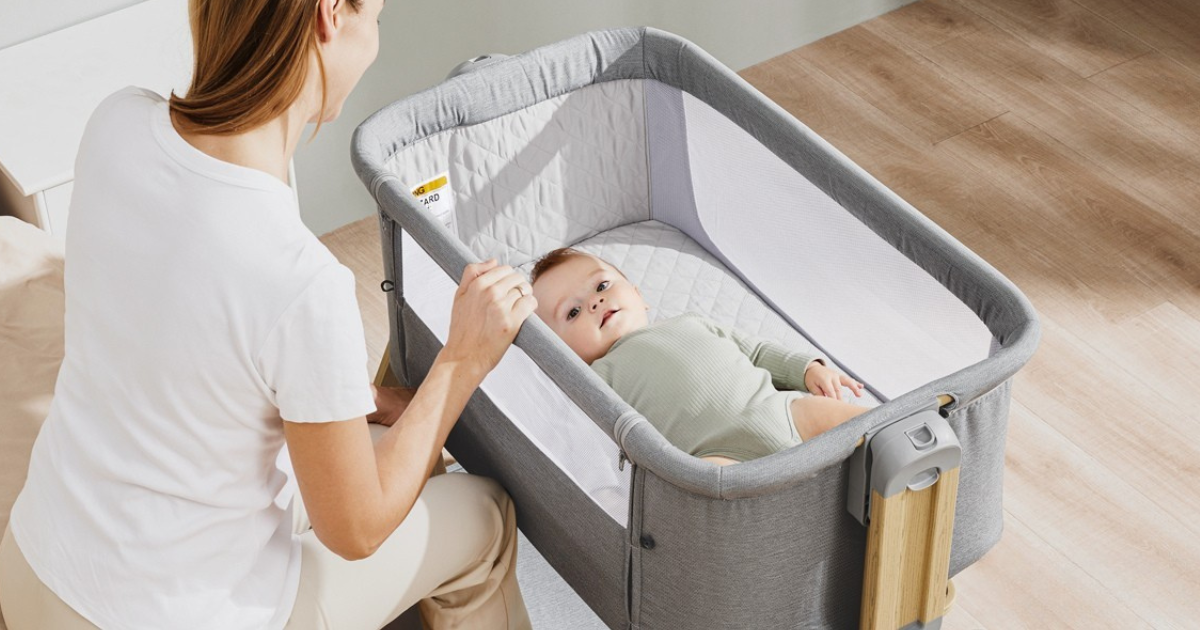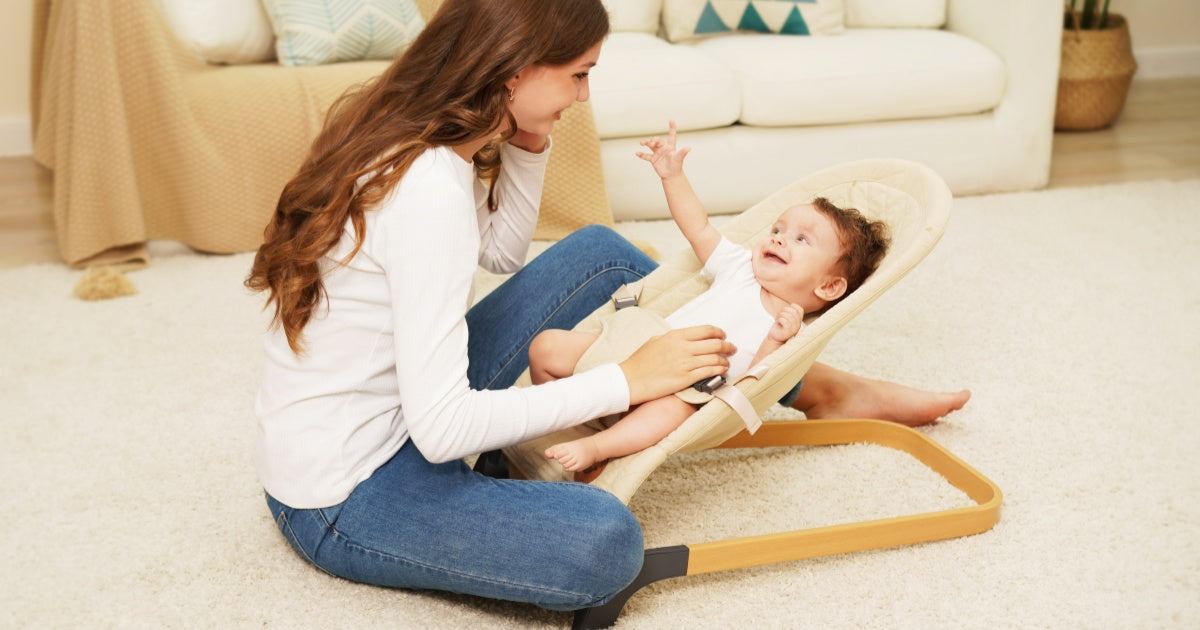The baby swing age limit is a crucial topic for every parent navigating the world of newborn gear and seeking those precious moments of calm. That rhythmic motion can bring instant peace to a fussy baby, making the swing a beloved sanctuary for many.
But as with all essential baby products, the time eventually comes when its use needs to be carefully re-evaluated. It's not always as simple as checking a number on the box; understanding when your little one has truly outgrown this comforting device is vital for their ongoing safety.
At Angelbliss, we understand that prioritizing your baby’s safety as they grow is a continuous journey. This guide will go beyond just the stated age and weight limits to reveal the crucial developmental milestones that are the true indicators it's time to retire the swing, empowering you to make safe and confident transitions for your remarkable, growing baby.

1. Understanding Baby Swing Limits
Every baby swing comes with guidelines set by its manufacturer. These are based on rigorous testing and safety standards designed to protect your infant.
1.1 What is the Typical Baby Swing Age & Weight Limit?
Generally, most baby swings are designed for infants from birth up to around 25-30 pounds, or approximately 6 to 9 months of age. However, these figures are not universal. Specific limits can vary significantly between different models and brands. For instance, some may have a lower weight threshold (e.g., 20 lbs), while others might technically support a slightly heavier baby.
The Golden Rule: Always, always, always consult your specific swing's user manual and product labels. This information is the definitive source for safe operation and non-negotiable guidelines. If you've misplaced the manual, make it a priority to check the manufacturer's official website by looking up your swing's model number; the details should be readily available.
1.2 Why These Limits Exist (and Why They're Crucial)
These manufacturer-set limits aren't arbitrary suggestions. They are foundational to ensuring your baby's safety for very serious, scientifically backed reasons:
Structural Integrity: Baby swings are engineered to safely support a precise load. Operating the swing with a baby who exceeds this weight (even slightly) can compromise the swing's frame, motor, or other critical components, making it unstable, prone to tipping, or even to a catastrophic collapse.
Safety Standards Compliance: Manufacturers adhere to stringent safety regulations established by bodies like the U.S. Consumer Product Safety Commission (CPSC). The specified weight and age limits are integral components of ensuring the product's safe design, intended use, and its ability to maintain stability and functionality under specified conditions.
2. The REAL Indicators: Developmental Milestones Outweighing the Age/Weight Limit
Here's the critical insight that often surprises new parents: your baby will almost certainly outgrow their swing developmentally before they reach its stated age or weight limit. This distinction is paramount and often serves as the most important determinant for when to discontinue use.
2.1 When Your Baby Starts Pushing Up, Rolling Over, or Attempting to Sit
This is the unequivocal, number one sign that it's time to retire the swing. The moment your baby begins to gain significant mobility – whether it's a deliberate push-up on their hands, a tentative roll from their back to their side, or showing nascent strength to attempt to sit upright – the swing transitions from a comforting aid to an inherent hazard.
The Danger: A mobile infant can dramatically shift their center of gravity within the swing, attempt to climb out, or even generate enough force to tip the entire unit over.
Crucial Reminder: Inclined devices like swings are categorically not considered safe sleep spaces for babies who possess the ability to roll. Should they fall asleep and then roll while in the swing, their airway can become severely compromised, posing a significant risk.
2.2 Showing Discomfort or Being Too Cramped
Pay meticulous attention to your baby's non-verbal cues. If their legs are dangling noticeably low, their head appears uncomfortably close to the top of the swing, or they simply seem restricted and unhappy in the confined space, these are clear indicators that they are physically outgrowing the swing. Even if they technically remain below the stated weight limit, their physical discomfort signals that the swing is no longer the appropriate or comfortable fit.
2.3 Over-reliance on Swing for Sleep (Even if Not a Safety Limit)
While this isn't a direct safety limit imposed by the swing itself, it represents a crucial developmental consideration. Suppose your baby becomes excessively dependent on the swing's consistent motion to fall asleep. In that case, it can inadvertently hinder their ability to develop vital independent sleep skills. This situation often signals that it's an opportune time to explore and establish alternative, non-motion-based soothing and sleep-induction methods.
3. The Dangers of Exceeding Baby Swing Limits
Using a baby swing beyond its specified limits – be it its stated age, weight, or, critically, your baby's developmental milestones – subjects your precious little one to a range of serious, yet entirely preventable, risks:
3.1 Increased Risk of Falls & Tipping
A heavier baby, especially one who has developed increased mobility and strength, can unpredictably shift their weight. This dynamic movement can drastically alter the swing's center of gravity, making the entire unit unstable. Such instability significantly amplifies the likelihood of the swing tipping over, which can result in a dangerous fall and severe potential injury to your baby.
3.2 Positional Asphyxia (Even When Awake or Semi-Alert)
Even for older infants who possess more head and neck control, the semi-reclined position inherent in a swing can still pose a risk of positional asphyxia. As a baby grows, their body proportions evolve, and it might inadvertently slump into a position where its head folds forward, inadvertently compressing its airway. This risk persists whenever a baby is in an inclined position for extended periods, particularly if continuous, vigilant supervision is not maintained.
3.3 Product Strain & Malfunction
Operating a baby swing beyond its designated weight limit, or continuing its use with a highly mobile and active infant, places undue stress and accelerated wear and tear on the swing's critical components. This includes the motor, the structural frame, and especially the safety harnesses and straps. Such increased strain can precipitate unexpected product failures, ranging from mechanical breakdowns to a sudden snapping of restraint buckles, directly endangering your child.
4. Finding Your Swing's Specific Limits (Don't Guess!)
As emphasized throughout this comprehensive guide, never assume or guess your baby swing's operational limits. Locating and adhering to the authoritative information provided by the manufacturer is paramount for your child's safety. Here's exactly where to find those crucial details:
Your User Manual: This document is your primary and most comprehensive source for all safety protocols, assembly instructions, and usage guidelines specific to your swing model. Make it a practice to store it in an easily accessible, safe place.
Product Labels/Stickers: The majority of baby swings feature durable, permanent labels or stickers affixed directly to the swing's frame – commonly found near the base, seat, or motor housing. These labels will clearly enumerate the maximum weight and age limits.
Manufacturer's Website: Should you find yourself without the physical manual or unable to locate the label, the manufacturer's official website is an invaluable resource. Navigate to their product support section and search for your specific swing model by name or product number; detailed specifications and downloadable manuals are typically available there.
5. What Comes Next? Smooth Transitions from the Swing
Once your baby gracefully reaches the baby swing age limit (or, more importantly, begins to exhibit those crucial developmental cues), it's time to embark on the next exciting stage of their growth journey: transitioning them away from the swing. This is a positive milestone, signifying your baby's remarkable progress!
5.1 Embrace Floor Time & Tummy Time
As your baby moves beyond the swing, make ample floor time a central part of their day. This unrestricted environment is absolutely crucial for their gross motor development, providing them with the freedom to practice essential skills like rolling, pushing up, pivoting, crawling, and eventually sitting and standing. Incorporate stimulating tummy time sessions as a regular, fun component of their daily routine.
5.2 Transition to Safe Sleep Spaces
Your baby must always have a designated, genuinely safe sleep space available.
Cribs: These serve as the long-term, primary safe sleep solution. Cribs provide a spacious, sturdy, and secure environment specifically designed for all infant and toddler sleep, whether it's a short nap or overnight slumber.

Bassinets: Excellent for newborns. Bassinets offer a firm, flat, bare sleep surface and are ideally sized to keep your baby close in your bedroom during those crucial first months.
Pack and Plays / Portable Playards: These highly versatile options fulfill a dual role as both secure play areas and safe sleep spaces. Many models feature a removable bassinet insert for younger babies and then transition into a robust playard as they grow. Their portability makes them incredibly convenient for travel or for providing safe, supervised naps in various rooms around the house.

5.3 Alternatives for Soothing (Non-Swing)
As your baby becomes less reliant on the swing's motion for comfort, explore and embrace a variety of other effective soothing methods:
Carrying and Gentle Rocking: The simple act of holding your baby close and providing gentle, rhythmic rocking can be profoundly comforting and effective.
Babywearing: Utilizing a comfortable baby carrier or wrap can keep your baby snuggled securely against you, often soothing them into a calm state while allowing you to remain hands-free.
Bouncing on an Exercise Ball: Gently bouncing on a large exercise ball while securely holding your baby can replicate a similar rhythmic motion without the risks associated with a swing.
White Noise & Swaddling: Continue leveraging established calming techniques like consistent white noise (at a safe volume) and, for newborns who have not yet shown signs of rolling, the snug comfort of swaddling to create a tranquil sleep environment.
Angelbliss Baby Swings: Thoughtful Design for Awake-Time Comfort
If you're considering a baby swing for those precious moments of supervised comfort and play, knowing what to look for is key. At Angelbliss, our baby swings are crafted with both your baby's comfort and your peace of mind during supervised awake time. We prioritize:
Secure Design: Featuring robust frames and reliable 5-point harness systems to keep your baby snug and safe.
Thoughtful Motion: Offering smooth, varied swinging motions to gently soothe and entertain.
Quality Materials: Made with soft, breathable, and non-toxic fabrics for your baby's delicate skin.
Clear Limits: Designed to meet strict safety standards with clearly stated age and weight limits for supervised use.
Explore our collection of Angelbliss Baby Swings, designed for those precious moments of supervised comfort and play.

